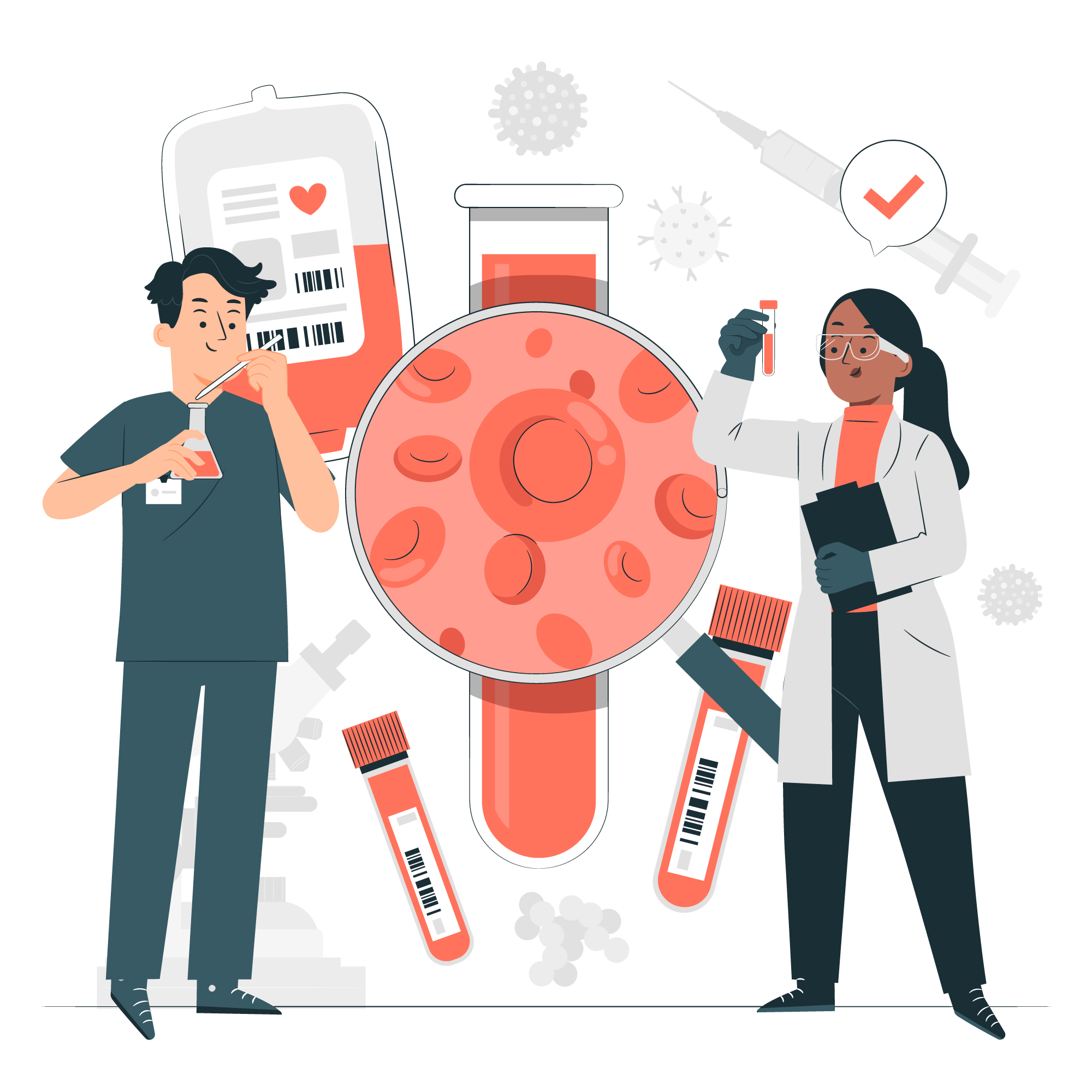Monsoon ka season alag hi maza deta hai 🌧️. Streets washed by rain, cool breeze, garam chai aur pakode ka combo. But jaise hi baarish shuru hoti hai, ek aur cheez shuru hoti hai — seasonal diseases.
And at the top of that list are the three notorious villains:
Dengue
Malaria
Typhoid
These three diseases become so common in monsoon that doctors often say:
👉 “Every fever in monsoon should be taken seriously until proven otherwise.”
Why? Because all three start with almost the same basic symptoms: fever, headache, weakness. But treatment for each one is completely different. Without proper blood tests, patients waste precious days in guessing or self-medicating — and by then, condition can get life-threatening.
So in this blog, let’s understand:
What are Dengue, Malaria, and Typhoid?
Their symptoms
Which blood tests confirm them
Why early testing is crucial
Prevention tips
FAQs people usually ask during monsoon
🦟 Dengue – The Platelet Killer
🔹 What is Dengue?
Dengue is a viral infection caused by four different strains of dengue virus. It spreads through the bite of Aedes aegypti mosquito, which breeds in stagnant clean water — tanks, buckets, flower pots. Unlike malaria mosquitoes, dengue mosquito bites during the day (early morning & late evening).
🔹 Symptoms of Dengue
Sudden high fever (up to 104°F)
Severe headache
Pain behind the eyes
Muscle and joint pain (breakbone fever)
Skin rash
Vomiting and nausea
Falling platelet count (key danger sign)
In severe cases → internal bleeding, shock, organ failure.
🔹 Blood Tests for Dengue
NS1 Antigen Test → Detects virus early (within 1–5 days of fever).
IgM & IgG Antibody Test → Detects immune response after 5 days.
CBC (Complete Blood Count) → Checks falling platelets, WBC count.
Delay in dengue test = platelet crash = higher chance of hospitalization.
Malaria – The Age-Old Monsoon Foe
🔹 What is Malaria?
Malaria is caused by a parasite Plasmodium, spread by bite of female Anopheles mosquito (mostly bites at night). There are different types (falciparum, vivax, malariae), but Plasmodium falciparum is the most dangerous.
🔹 Symptoms of Malaria
High fever with chills and sweating
Shivering followed by extreme tiredness
Weakness and fatigue
Headache, vomiting
In some cases: jaundice, seizures, coma
🔹 Blood Tests for Malaria
Peripheral Smear Test (Blood Smear) → Gold standard, detects parasite directly under microscope.
Rapid Diagnostic Test (RDT) → Quick results within minutes.
CBC Test → May show anemia and low platelets.
If untreated, malaria can cause multi-organ failure, especially in falciparum malaria.
💧 Typhoid – The Waterborne Trouble
🔹 What is Typhoid?
Typhoid fever is caused by Salmonella Typhi bacteria, spread via contaminated food and water. Monsoon mein drainage overflow, street food contamination, aur unsafe drinking water ki wajah se yeh zyada common hota hai.
🔹 Symptoms of Typhoid
Slow, persistent fever (rising day by day)
Severe weakness, fatigue
Stomach pain, diarrhea, or constipation
Loss of appetite
Headache
Skin rashes (rose spots in some cases)
🔹 Blood Tests for Typhoid
Widal Test → Detects antibodies in blood.
TyphiDot Test → Quick antibody detection (IgM, IgG).
Blood Culture → Confirms exact bacteria (gold standard).
Delay in diagnosis can lead to intestinal perforation → surgical emergency.
🧾 Comparison Table – Dengue vs Malaria vs Typhoid
| Feature | Dengue | Malaria | Typhoid |
|---|---|---|---|
| Cause | Virus | Parasite (Plasmodium) | Bacteria (Salmonella Typhi) |
| Spread by | Aedes aegypti mosquito | Anopheles mosquito | Contaminated food & water |
| Main Symptom | High fever + platelet drop | Fever with chills & sweating | Prolonged fever + stomach issues |
| Blood Test | NS1, IgM/IgG, CBC | Smear, RDT, CBC | Widal, TyphiDot, Blood Culture |
| Danger if untreated | Internal bleeding, shock | Organ failure, coma | Intestinal perforation |
Why Blood Tests Are Crucial in Monsoon
Similar symptoms → Without tests, doctor also can’t confirm.
Different treatments →
Dengue (viral) → Supportive care, fluids, platelet monitoring.
Malaria (parasite) → Anti-malarial medicines.
Typhoid (bacterial) → Antibiotics.
Complications develop fast → Early detection = better recovery.
Cost & hospital stay reduced → Delay in testing often leads to ICU admission.
🧘 Prevention Tips – Save Yourself Before It’s Too Late
For Dengue & Malaria (Mosquito Control)
Don’t allow water to stagnate in coolers, pots, buckets.
Use mosquito repellents, nets, coils.
Wear full-sleeved clothes.
Keep doors/windows screened.
For Typhoid (Safe Food & Water)
Drink only boiled, filtered, or bottled water.
Avoid roadside food during monsoon.
Wash fruits and vegetables properly.
Practice hand hygiene (wash hands before meals).
❓ FAQs on Monsoon Diseases
Q1. Can I have dengue without fever?
👉 Rare, but yes. Some people only present with weakness & low platelets.
Q2. Can dengue and malaria occur together?
👉 Yes, co-infections happen in monsoon. That’s why doctors often prescribe combined tests.
Q3. How long does typhoid fever last?
👉 Without treatment, 3–4 weeks. With antibiotics, it usually improves in 5–7 days.
Q4. Which blood test should I do first if I have fever in monsoon?
👉 A basic CBC is a good start — it shows platelet levels (dengue), anemia (malaria), infection markers (typhoid). Based on that, doctor recommends specific tests.
Monsoon season brings happiness, but also health risks. Dengue, Malaria, and Typhoid are common but dangerous. All three look like “normal fever” in the beginning, but can turn deadly without timely diagnosis.
The golden rule:
Don’t ignore fever during rains.
Don’t self-medicate.
Don’t delay blood tests.
Because sometimes, a simple blood test can save a life.
Stay safe, stay healthy, and enjoy the rains without fear.


